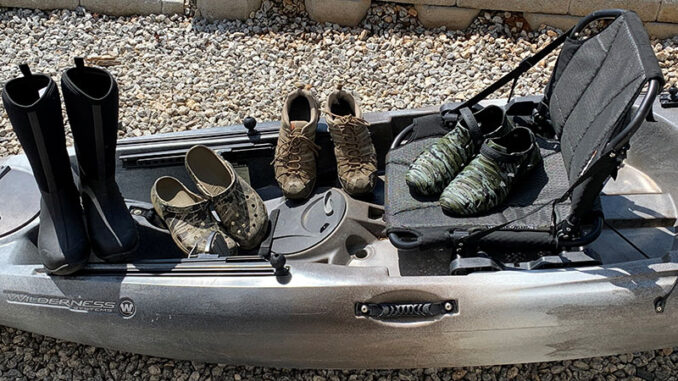
Boat shoes have gone from simply being an article of clothing worn on the feet to being a fashion statement.
Then at some point, either through marketing or necessity, footwear manufacturers started cluing in on what boaters actually needed to wear on their feet. Boat shoes became “water shoes,” then “kayaking shoes,” and a whole new industry was born. Still, the question remains: Does it really matter what’s on your feet?
The answer depends on a number of variables. This list includes the time of year, the type of activity being pursued from a kayak, where you plan on putting in, where you plan on taking out, and whether you’re paddling in the traditional sense of kayaking or pedaling, as so many kayak anglers have chosen to do.
When kayak fishing during the late spring and summer, you may not even need shoes. Isn’t one of the many benefits of kayaking being able to stick your feet in the water? As the weather and water turns cooler, however, you’ll need to cover your feet and keep them dry to prevent getting cold and for protection. In spring and fall, water shoes that can get wet but will quickly drain and dry are the norm.
Get wet
Launching a kayak often requires stepping into the water, and maybe up to a foot or two of depth. In winter, knee boots serve this purpose and will keep your feet dry. Some of the neoprene-clad upper and rubber-soled variety that are popular with deer and turkey hunters will allow you warmth, dryness, flexibility, durability, and comfort when paddling in colder temperatures.
Ideally, we’d all launch from sandy shores and return to the same. In real life, however, rocks, tree limbs, oyster shell, barnacles, and broken concrete get thrown into the mix. While neoprene outer layers see a lot of use in kayaking footwear, neoprene and oyster shell don’t mix well. In rough terrain, outer shells that include a mixture of rubber, plastic, and canvas tend to wear better and prevent injury. Most of the time, these shoes are vented in strategic locations which allow the shoes to drain and (theoretically) dry out faster.
When fishing in the winter months, waders become an option for kayak angling. In those conditions, moving in and out of a paddle boat in a pair of chest or hip waders is not such an ordeal and may be the best way to handle the boat.
Water wolves
Muskellunge populate a very small percentage of waterways in the Carolinas, and doing battle with one is different than fighting any other species here.
Veteran anglers approach muskie fishing with two methods – fly fishing large streamers and poppers or baitcasting to fish with heavy duty 8 ½-foot rods spooled with 60-pound braided line and 100-pound fluorocarbon leaders. Muskies in the Carolinas can achieve respectable sizes: 40- to 45-inch fish, 30-pound plus weights, are common. Muskies also come equipped with a set of large, sharp teeth, earning them the name “water wolves.”
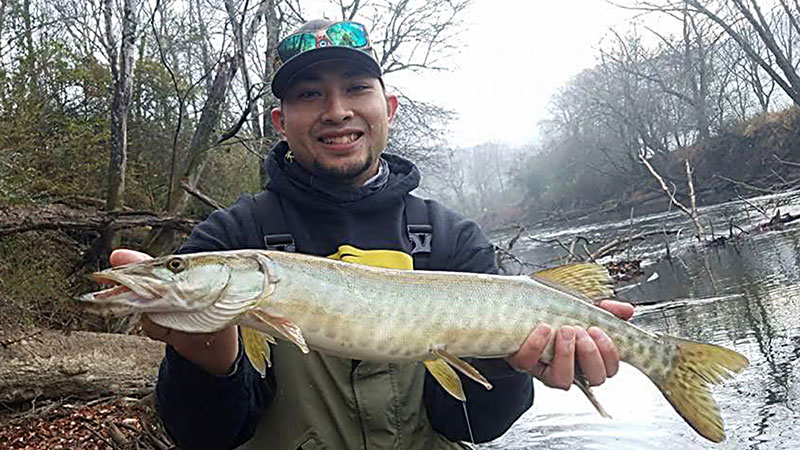
The best muskie waters in riverine environments are deep, slow pools in the upper sections of both the lakes and rivers where they reside. A good day’s fishing is when an angler gets a couple of follows from large muskie, which are notorious for hiding out under shoreline cover and submarining large baits, and a better day is getting one to bite. It’s not uncommon to get a fish to follow a bait all the way to the boat and then try to entice a strike by waving the rod in a figure 8 circle to tease the bait in front of the fish’s nose.
After hearing about musky and wanting to add one to his long list of kayak fishing accomplishments, Hobie pro angler Saturday Mel of Hendersonville, NC was finally able to connect with one on the French Broad River near his home. The fish fell to a big bucktail spinnerbait. He has since added several muskies to the list and looks upon this fish as one of his favorite kayak fishing accomplishments.
“I’m all about CPR – catch, photo, and release,” he said. “These fish look big and mean, but these are fragile fisheries and these fish belong back in the water.”
Best Bets
NORTH CAROLINA
WHAT — Muskellunge
WHERE — Lake James
HOW — Target muskies here with big, splashy lures and stout tackle. Cast around blow downs and rock outcroppings. If one shows interest, keep retrieving all the way to the boat, leave 8 feet of line off the tip, then lean out to swim the bait back and forth boatside to close the deal.
LAUNCH — Catawba River Access – Lake James State Park, 6883 NC Hwy 126, Nebo, NC 28761
INSIDER TIP — Locals say the Catawba River is the best place to target muskies. Raising one fish a day is considered a success.
SOUTH CAROLINA
WHAT — Speckled trout
WHERE — Charleston Harbor
HOW — Look for break lines where clear water is moving across fish-holding structure in creeks and rivers that feed into Charleston Harbor, and cast artificial shrimp, live shrimp or finger mullet under a popping cork. Early in the month is usually better for November.
LAUNCH — Find your launch spot at dnr.sc.gov/boating
INSIDER TIP — It’s tough to beat live shrimp under a popping cork, but if the fish are finicky, try a split-shot rig, minus the cork.

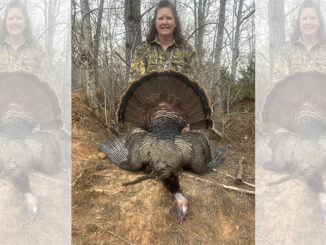
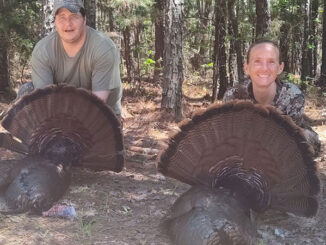
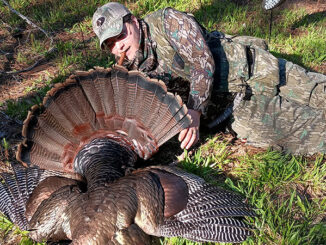

Be the first to comment